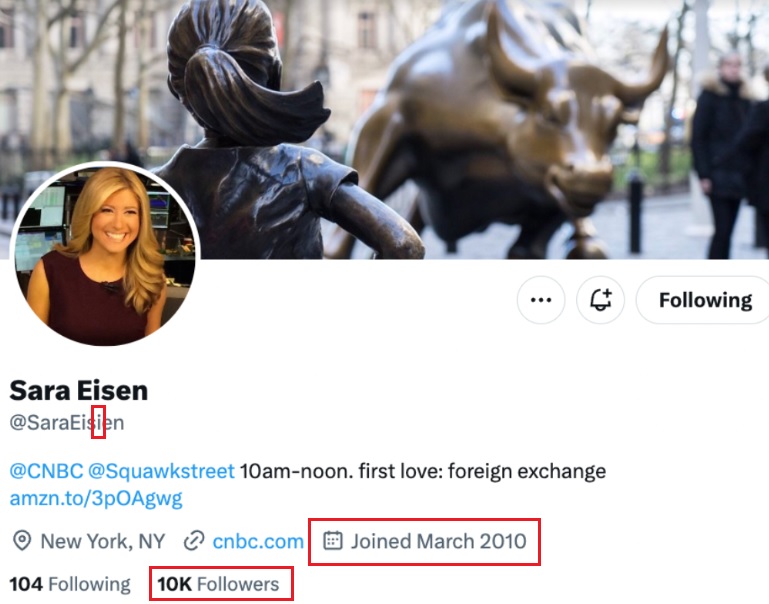Did you hear about the Ticketmaster customer care impersonation? What about the 165 fake profiles impersonating Bank Negara? Other major companies like American Express and Bank of America have also been impersonated on social media in recent months.
Impersonations pose a significant threat in today’s digital landscape. Malicious actors can easily create fake profiles and masquerade as anyone, exploiting the trust and vulnerability of individuals for identity theft, phishing, and even financial scams, and causing major reputational damage.
However, when it comes to individual impersonations, this serious risk is often overlooked or underestimated. We have no problem seeing the significant harm to companies and businesses: the potential for financial losses, for misled and cheated customers, and the overall effect on the industry. For that reason, a profile posing as Amazon seems more dangerous than a profile posing as our friend’s dad.
But the stakes for individual impersonations and the repercussions are more severe than we believe them to be. It isn’t just about identity theft: it’s about the public figures we trust.
The False Sara Eisen
Sara Eisen is a financial news anchor for the network CNBC. She was the host of shows like Worldwide Exchange, Squawk on the Street, Power Lunch, and Closing Bell, as well as some Bloomberg Radio shows. She regularly posts on Twitter and has over 168,000 followers.

Cyabra uncovered an impersonator profile, taking advantage of Sara Eisen’s status, exposure and engagements. The profile looked completely identical to the real Sarah Eisen, copying her profile picture, cover picture, bio and links. Not only that: the fake profile actually responded to DMs as the real Sara Eisen!
The only differences between the two profiles were the number of followers, the blue Twitter checkmark which the impersonator did not purchase, and the handle – the real profile was @SaraEisen, to which the impersonator added one single letter: @SarahEisien. It was almost impossible to tell the difference.

Profiling the Fake Profile
The fake profile started tweeting on May 18, 2023. Since then, it posted a total number of 119 tweets, mimicking the real Eisen’s behavior on social media. The imposter copied and repeated almost every tweet, retweet, or reply by Eisen, sharing clips of her shows, retweets of accounts like @cryptocasey and @RobertKennedyJr, tweets referring to music or celebrities, and even photos of cats.
This is not the first time Cyabra has seen this behavior as part of impersonation tactics: the fake profile tirelessly mimics the original profile, building credibility until it eventually starts to share malicious content – whether it’s phishing and scams, or, as seems more likely in this case, spreading disinformation, fake news, and mistrust.


Fortunately, in this case, some of the harm was averted. Cyabra alerted Twitter and the real Sara Eisen of the imposter profile, and a few days later it was deactivated and deleted from the platform.
While the fake profile was only active for a few months, it was actually created all the way back in 2010, only one year after the real Sara Eisen created her Twitter profile, implying careful planning by the bad actors behind it. While the fake profile came nowhere close to the number of followers the real Eisen had, it presumably tricked 10,000 followers to think it was the real Eisen. A closer inspection by Cyabra, however, revealed that most of those followers were just as fake as the profile they were following, and were created on the same month the imposter started operating the fake profile. The number of followers was simply another sophisticated method of building the fake Eisen’s credibility.
The Doppelgangers Strike Back
It wasn’t long ago when an account impersonating Bloomberg shared a fake image of the Pentagon exploding and caused S&P 500 to drop by 30 points before the imposter was taken down. This case proved beyond doubt that impersonations on social media are a growing threat to our society, and shouldn’t be disregarded.
While the Sara Eisen imposter was exposed and deleted from Twitter before it could cause similar damage, Cyabra’s research uncovered two more fake Sara Eisen profiles, possibly created by the same malicious actor. One has the handle @SaraEiseen and was created in 2012, and the other is @SaraEisenCNBC, (a handle which actually seem even more credible compared to the other imposters, since Sara Eisen’s name is spelled correctly) and was created around the same time the first fake profile was deleted.


At the moment, none of those profiles are active. But if we had to guess, they would soon start displaying the same sort of behavior we have learned to expect from malicious actors impersonating public figures. And even if those fake profiles are removed, the imposters have demonstrated strategic foresight, meticulous planning, and the ability to utilize Sara Eisen’s name, reputation and base of followers for their personal agenda.
Exploiting the full array of available technology, including bot networks for sale and generative AI, malicious actors have raised the level of influencer impersonations. It is crucial for public figures, companies, and organizations to maintain a vigilant watch over social media, and to promptly identify and address impersonators – otherwise, when their malicious intents will finally be revealed, it might be too late to fight back.
Learn more about the danger of impersonations on social media and how to defend your company or organization against them by contacting Cyabra.


